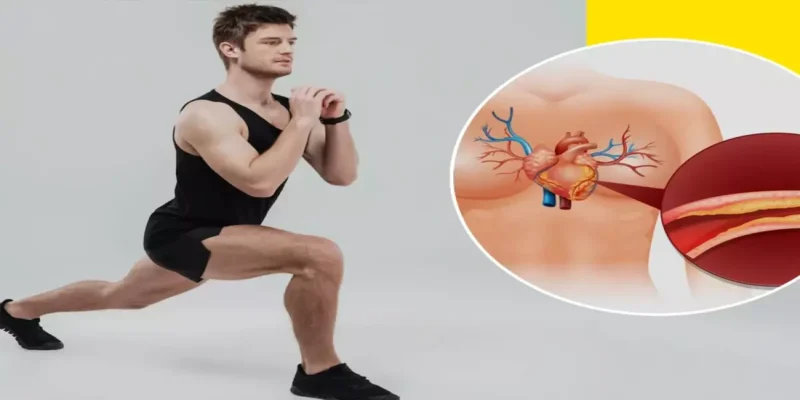[ez-toc]
Introduction
In today’s fast-paced world, where convenience often trumps health, managing high cholesterol has become a critical concern for many. High cholesterol levels can significantly increase the risk of heart disease, stroke, and other cardiovascular problems.
While dietary changes and medication play vital roles in cholesterol management, the power of exercise should not be underestimated.
In this article, we will explore effective strategies for maintaining healthier cholesterol levels through regular physical activity.
Understanding Cholesterol and Its Implications
Cholesterol is a waxy, fat-like substance found in your blood. While the body needs cholesterol to build healthy cells, high levels of LDL (low-density lipoprotein) cholesterol, often referred to as “bad” cholesterol, can lead to plaque buildup in the arteries, restricting blood flow and increasing the risk of heart disease.
HDL (high-density lipoprotein) cholesterol, on the other hand, is known as “good” cholesterol, as it helps remove LDL cholesterol from the bloodstream.
The Role of Exercise in Cholesterol Management
Regular physical activity offers a multi-faceted approach to managing cholesterol levels. Exercise not only boosts HDL cholesterol but also helps control weight, improve blood circulation, and reduce inflammation—all of which contribute to a healthier cardiovascular system.
Types of Exercises for Cholesterol Control
Aerobic Exercises: Pumping Your Heart
Aerobic exercises, such as brisk walking, jogging, cycling, and swimming, elevate your heart rate and promote better circulation. Aim for at least 150 minutes of moderate aerobic activity or 75 minutes of vigorous activity each week.
Strength Training: Building Muscles, Boosting Metabolism
Engaging in strength training exercises, like weightlifting or bodyweight exercises, helps build lean muscle mass. Muscle tissue burns more calories than fat, which can aid in weight management and metabolism regulation.
Flexibility and Balance: Holistic Well-being
Activities like yoga and tai chi enhance flexibility, balance, and relaxation. They contribute to overall well-being by reducing stress and promoting a sense of calm.
Designing Your Exercise Plan
Setting Realistic Goals
Start with achievable goals that align with your fitness level and schedule. Gradually increase the intensity and duration of your workouts as your strength and endurance improve.
Creating a Balanced Routine
Incorporate a mix of aerobic, strength training, and flexibility exercises into your weekly routine. This holistic approach ensures comprehensive cardiovascular health.
Also Read: Outdoor Activities for Relaxation: Nature’s Role in Stress Management
Incorporating Cardio and Resistance
Combining cardiovascular exercises with resistance training offers the best of both worlds—improved heart health and increased muscle strength.
Tips for a Safe Exercise Journey
Consulting a Healthcare Professional
Before embarking on a new exercise regimen, consult your healthcare provider, especially if you have existing health conditions.
Starting Slow and Gradually Increasing Intensity
Begin with low-impact exercises and gradually intensify your workouts to prevent overexertion and reduce the risk of injury.
Staying Hydrated and Listening to Your Body
Stay hydrated during your workouts and pay attention to your body’s signals. Rest when needed and avoid pushing yourself too hard.
Motivation and Consistency: Overcoming Challenges
Finding Activities You Enjoy
Discover physical activities that resonate with you, making it more likely that you’ll stick with your exercise routine.
Enlisting Support and Accountability
Partner up with a friend or join group classes to stay motivated and accountable on your fitness journey.
Tracking Progress for Encouragement
Keep a record of your workouts and milestones reached. Seeing your progress can be highly motivating.
Lifestyle Factors to Enhance Cholesterol Management
Balanced Diet: The Perfect Companion
Combine exercise with a heart-healthy diet rich in fruits, vegetables, whole grains, and lean proteins for optimal results.
Adequate Sleep: Fuel for Recovery
Prioritize sleep, as it plays a crucial role in muscle recovery and overall well-being.
Stress Management: Mind and Heart Harmony
Practice stress-reduction techniques like meditation or deep breathing to keep your heart and mind in sync.
Celebrating Milestones: Acknowledging Your Progress
Regularly celebrate your achievements, whether it’s completing a challenging workout or hitting a fitness goal. Rewarding yourself reinforces positive behavior.
Conclusion
In conclusion, managing high cholesterol through exercise is a powerful and holistic approach to ensuring a healthier heart.
By understanding the types of exercises, designing a personalized plan, and considering essential lifestyle factors, you can significantly improve your cholesterol levels and overall cardiovascular well-being. Remember, every small step towards a more active lifestyle is a step towards a healthier you.






Wonderful article! That is the type of info that are meant to be shared around the internet.
Shame on Google for now not positioning this publish upper!
Hey there, You’ve done a great job. I’ll definitely
digg it and personally suggest to my friends. I’m confident they will be benefited from this web site.
These are genuinely great ideas in concerning blogging. You have touched some good factors here.
Any way keep up wrinting.